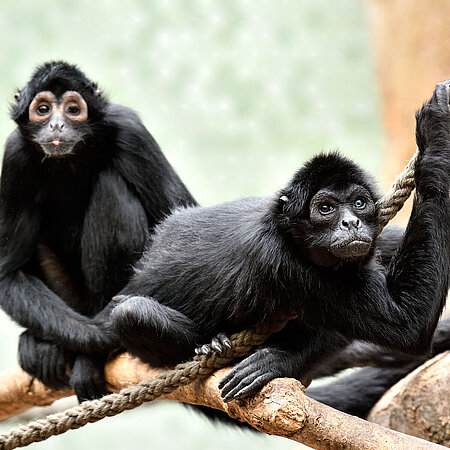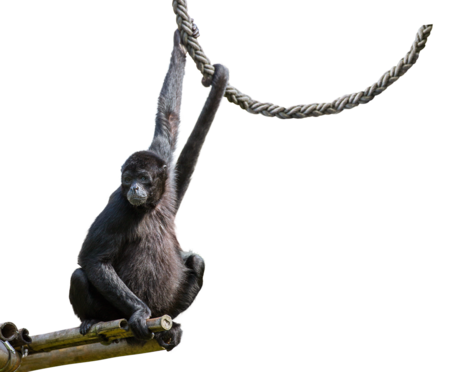Colombian spider monkey
Ateles fusciceps rufiventris

- FamilyAtelids (Atelidae)
- WeightUp to 10 kg
- Habitattropical rainforests
Endangered climber
The Colombian spider monkey is one of the most endangered primates on the planet. It is highly agile thanks to its long lanky limbs and slender body. In addition to its arms and legs, the spider monkey also uses its long prehensile tail as a “fi fth limb” to climb. The tip of the tail is hairless with touch-sensitive tactile cells for better grip.

Thumbless hands
Spider monkeys live almost exclusively high up in the canopy of the rainforest. They are perfectly adapted to arboreal life with four hook-like fingers and no thumb. The lack of a thumb, lost through evolution, allows the four fingers to grasp branches and swing through the treetops with greater ease.
Male Colombian spider monkeys stay with their natal group for their entire life, while females leave their group at about the age of five.
Distribution


Hellabrunn Zoo participates in the European Endangered Species Programmes